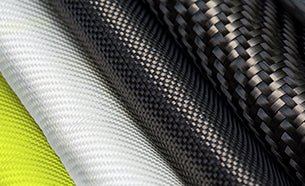Innovation in materials has always been a driving force behind technological advancement. Today, we'll delve into the world of advanced materials, focusing on three key players: carbon fiber, fiberglass, and Kevlar. These materials have revolutionized industries ranging from aerospace to sports, offering unique properties and applications that have reshaped the way we think about design and engineering.
Carbon Fiber: The Lightweight Wonder
What is Carbon Fiber?
Carbon fiber is a material consisting of thin, strong crystalline filaments of carbon, often used in combination with other materials to form a composite.
Key Properties:
- Strength: Carbon fiber is incredibly strong, often outperforming steel on a strength-to-weight ratio.
- Lightweight: It's significantly lighter than metals like aluminum and steel.
- Durability: Carbon fiber is highly resistant to corrosion and fatigue.
- Flexibility: Despite its strength, carbon fiber is flexible and can be molded into complex shapes.
Applications:
Carbon fiber is widely used in aerospace, automotive, and sporting goods industries. From aircraft components to high-performance bicycles, carbon fiber's properties make it an ideal choice for applications where strength and lightweight are critical.
Fiberglass: The Versatile Composite
What is Fiberglass?
Fiberglass is a composite material made of fine glass fibers woven into a cloth, then bonded together with a resin.
Key Properties:
- Strength: Fiberglass is strong and stiff, making it ideal for applications where rigidity is required.
- Lightweight: Like carbon fiber, fiberglass is lightweight compared to metals.
- Flexibility: Fiberglass can be molded into various shapes, making it versatile for different applications.
- Insulation: It's a good insulator, both electrically and thermally.
Applications:
Fiberglass is commonly used in boat hulls, automotive bodies, and building materials. Its versatility and durability make it a popular choice for applications that require a balance of strength and flexibility.
Kevlar: The Tough, Yet Flexible
What is Kevlar?
Kevlar is a synthetic fiber known for its high tensile strength-to-weight ratio.
Key Properties:
- Strength: Kevlar is incredibly strong, even stronger than steel on an equal weight basis.
- Lightweight: It's lightweight and flexible, making it comfortable to wear.
- Heat Resistance: Kevlar has excellent heat resistance, making it suitable for high-temperature applications.
- Chemical Resistance: It's highly resistant to chemicals, making it ideal for protective gear.
Applications:
Kevlar is best known for its use in ballistic body armor, but it's also used in tires, ropes, and cables. Its strength and flexibility make it an ideal material for applications where protection and durability are paramount.
Conclusion: Innovating with Advanced Materials
The use of advanced materials like carbon fiber, fiberglass, and Kevlar has opened up new possibilities in design and engineering. From lightweight aircraft to bulletproof vests, these materials have reshaped industries and continue to drive innovation forward. As we look to the future, it's clear that advanced materials will play an increasingly important role in shaping the world around us.
What are your thoughts on advanced materials like carbon fiber, fiberglass, and Kevlar? How do you see these materials shaping the future of design and engineering? Share your thoughts in the comments below!



Leave a comment
This site is protected by hCaptcha and the hCaptcha Privacy Policy and Terms of Service apply.